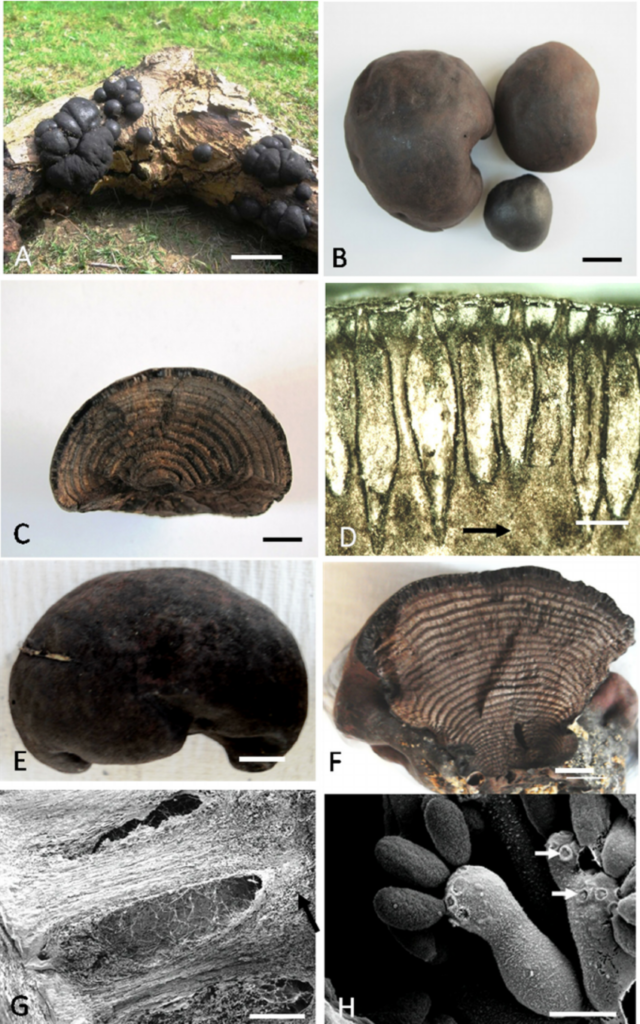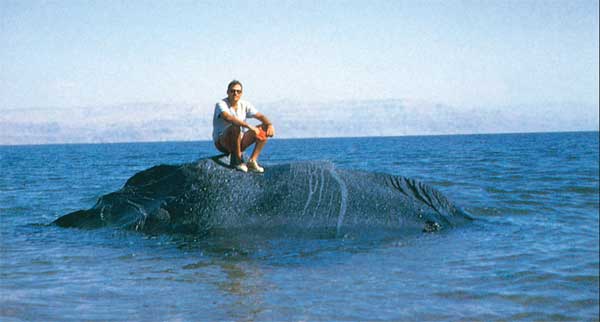In the Scripture, there is a peculiar black building substance called “slime, Bible Slime or Bitumen,” used for the “mortar for stone and concrete bricks” to build the “Tower of Babel” in ancient Babylonia. It was also paramount in Ancient Egypt to construct the Great Pyramids of Egypt and preserve mummies. Many millennia later, with the coming of Islam, Muslim physicians began to prescribe it for skin ailments and wounds.
This same product that we know today is fossil fuels are also variously translated in the Bible as “bible slime, bitumen, naphta, pitch, tar, asphaltos,” and you will discover is associated with the concept of Tartarus (Tartaros) or Hell, sinning angels and what are called “pits of darkness, to be reserved for judgment.”
For example, we find that this Bible Slime or Bitumen was made in “tar or slime pits” and sometimes the “Lake of Sodom” in Sodom and Gomorrah and later the Dead Sea. In this slime, people are stuck in a type of darkness where they cannot see the light and are referred to as slugs. We read in Psalms,” Like a slug that moves along in slime, like a woman’s miscarried child, they will not see the sun.” (Psalm 116:3)
Due to its ability to “bind and waterproof” various materials, it quickly became one of the most prized and lucrative commercial industries in all the Mediterranean and now the world to this very day. Today, we know of Bible Slime or Bitumen used in its various forms as “asphalt and fossil fuels” for petroleum-like products such as oil and gas, which account for the largest share of energy production and consumption and global pollution.
Spiritually speaking, darkness and light are references to conscious people (awake, enlightened, or woke) and asleep (sleepwalking, unenlightened, zombie, sheople). Let me remind you that when snails are in the sun (light), they shrink, shrivel up, and no longer see the light so they disappear from their shells.
This Biblical reference to they will not see the sun reminds me of the fact that today when these fossil fuels are burned, carbon dioxide (CO2) is produced, which is a major contributor to local air pollution and is linked to millions of premature deaths each year and global climate change. In 2019, approximately 84% of global primary energy came from this decayed organic material ie, coal, oil, and gas.
According to the U.S. Energy Information Administration
“Fossil fuels, or energy sources formed in the earth’s crust from decayed organic material, including petroleum, natural gas, and coal, continue to account for the largest share of energy production and consumption in the United States. In 2019, 80% of domestic energy production was from fossil fuels, and 80% of domestic energy consumption originated from fossil fuels.”

The word slime is translated in the Bible as “temer, temes, or tamas” meaning dark or darkness, to hide, or cover-up, and the Hebrew macah and masah, which means “decay, consume, to melt, liquefaction, i.e. disappearance.” The word slime is also variously translated as “bitumen” in the Latin Vulgate and from bitumen as “chomer” in the Hebrew Bible.
I believe all words originally represented what we would call today “molds in English or fungi in Latin,” which I will clearly explain and prove in this article.
Before we look more into the Scripture, we must study etymology and the ancient definitions given to us by historians who have gone before us. For example, when we look at Herodotus’s explanation, he tells us that bitumen is “the product of the decomposition of vegetable and animal substances.“
Herodotus had written;
“Bitumen is the product of the decomposition of vegetable and animal substances. It is usually found of a black or brownish-black color, externally not unlike coal, but it varies in consistency from a bright, pitchy condition, with a conchoidal fracture, to thick, viscid masses of mineral tar.” (Encyc. Brit.)
Herodotus’s reference clearly shows us that this “slime of bitumen” is a product of the decomposition of both vegetables and animals. When we look to modern science for the definition of decomposition, we see that it means “the state or process of rotting; decay of organic waste.”
The principal microorganisms involved in the decomposition and rotting process on earth are fungi/molds.
Their main job on earth is to decompose organic matter by releasing enzymes to break down the decaying material. Fungi/molds absorb the nutrients in the decaying material via their hyphae which is used to break down matter and absorb nutrients then will create the very black, brownish tar-like substance as described by Herodotus.
In addition to these facts, if we look at the explanations given to us by Pliny, he says;
“Near to the nature of sulfur is also that of bitumen.
In some places, it is a slime, and others earth, the slime being emitted, as we have said, from the lake of Judaea and the earth being found in the neighborhood of the seaside town of Sidon in Syria.
Both of these varieties get thickened and solidify into a dense consistency. But there is also a liquid sort of bitumen, such as Zacynthus and the kind imported from Babylon; at the latter place, it also occurs with a white color. The Bitumen from Apollonia also is liquid, and all of these varieties are called by the Greeks pissasphalt, from its likeness to vegetable-pitch and bitumen.
There is also an unctuous bitumen, of the consistency of oil, found in Sicily, in spring at Girgenti, the stream from which it is tainted. The inhabitants collect it on tufts of reeds, as it very quickly adheres to them, and they use it instead of oil for burning in lamps, and also as a cure for scab in beasts of burden. Some authorities also include among the varieties of bitumen naphtha about which we spoke in Book II, but its burning property and liability to ignition is far removed from any practical use.”
Pliny further writes, “The test of bitumen is that it should be extremely brilliant and that it should be massive, with an oppressive smell; when quite black, its brilliance is moderate, as it is commonly adulterated with vegetable pitch. Its medical effect is that of sulfur, as it is astringent, dispersive, contractive, and agglutinating. Ignited it drives away snakes.”
When we look to modern science, we will discover that sulfur plays a key role in the world of fungi/molds. For example, studies have shown that fungal sulfur uptake is required to incorporate into the sidechains of various amino acids and is also essential for biosynthesis. In addition, in certain filamentous fungi, sulfur is also indirectly required for different metabolite functionalities.
Interestingly, fungi/molds such as Fusarium oxysporum reduce elemental sulfur to hydrogen sulfide (H2S), which creates a reaction accompanied by fungal growth and oxidation of the carbon source (ethanol) to acetate. Ethyl acetate is highly flammable, as well as toxic when ingestion or inhaled, and this chemical can be seriously damaging to internal organs,
This now brings us to an infamous fungus that is an inedible named Daldinia concentrica is also known as coal fungus and carbon balls due to its ability to burn.

This unique feature is due to the ethyl acetate extract of its fruit bodies. Its other names are King Alfred’s cake and cramp balls.
Daldinia concentrica lives on dead and decaying wood and is ball-shaped, with a hard, friable, shiny black fruiting body 2 to 7 centimeters wide that looks like a chunk of coal.
It is sometimes called “bituminous coal” in which the spores of the fungus (tips of the threads) act as fuel and release a putrid type smell that can drive away pests, snakes, and anyone for that matter.
A fungus that is one of the most useful forms of tinder for fire-lighting in the world, just like Pliny described and still carries the name bitumen.
Bible Slime is first spoken of as used for slime that was later changed to cement by the builders in the plain of Shinar or Babylonia. (Genesis 11:3) The bitumen pits in the vale of Siddim are mentioned in the ancient fragment of Canaanitish history (Genesis 14:10). The ark of papyrus in which Moses was placed was made impervious to water by a coating of bitumen and pitch. (Exodus 2:3)
The word “slime” occurs in the following passages: “And they had brick for stone, and slime had they for mortar” (Genesis 11:3); “Now the vale of Siddim was full of slime pits” (Genesis 14:10, margin “bitumen pits”); “She took for him an ark of bulrushes, and daubed it with slime and with pitch” (Exodus 2:3). “The vale of Siddim was full of slime pits” (Genesis 14:10); “the pit of destruction” (Psalm 55:23).
Flavius Josephus, in the Antiquities of the Jews, had written a descriptive passage about the Dead Sea (known in Latin as Lacus Asphaltitus, or “Asphalt Lake”) and the harvesting of bitumen. He identifies the Dead Sea in geographic proximity to the ancient biblical city of Sodom and refers to the lake by its Greek name, Asphaltites.
Josephus mentions people using bitumen chiefly as amulets and during the siege of Jerusalem in the year 70 CE, the tunnels under the city were set fire with bitumen, which collapsed with the Roman siege engines falling into the crevices. In the building of the tower of Babylon, Josephus claims that it was used as a mortar for waterproofing. He writes, “Its thickness dwarfed its apparent height, and it was made from baked bricks cemented with bitumen to prevent them from being washed away.”
Here is an image from 1969 showing a man sitting on a large car size chunk of bitumen in the Dead Sea.

Several other Biblical passages give us context as to what these slime and bitumen pits genuinely mean.
These passages align with Herodotus’s statement that “slime of bitumen” is a product of decomposition of both vegetables and animals, which I contend we would call “fungi or molds.” The pits would have been a type of special “burial ground or grave yeard” that I theorize was how our ancestors sought to control or manage the spirit world of our departed ancestors.
For example, going back to the Hebrew Scriptures of the Old Testament, we find the word “chomer” is another word used interchangeably for Bible Slime, bitumen, of earth, a bubbling up, mortar, clay, dust, ashes, heap, and or mire.
These definitions, I contend, are clues to its original meaning like we have discovered with bible slime and bitumen. Some obvious passages from the Scripture with the word chomer as the mortar or the fungal filaments enveloping modern humanity would align with my fungi/molds controlling sinners theory are;
Genesis 11:3: “for stone, and slime had they for chomer (mortar).”
Exodus 1:14: “bitter with hard bondage, in chomer (mortar), and in brick, and in all manner of service in the field:”
Exodus 8:14: “And they gathered them together upon chomer (heaps): and the land stank.”
Exodus 8:14: “And they gathered them together upon heaps: upon heaps: and the land stank.”
Leviticus 27:16: “then thy estimation shall be according to the seed thereof: a homer of barley seed shall be valued at fifty”
Numbers 11:32: “he that gathered least ten homers: and they spread them all abroad for themselves round about the camp.”
Job 4:19: “How much less in them that dwell in houses of clay, whose foundation is in the dust, which are crushed”
Job 10:9: “I beseech thee, that thou hast made me as the clay; and wilt thou bring me into dust again?”
Job 13:12: “unto ashes, your bodies to bodies of clay.”
Job 27:16: “as the dust, and prepare raiment as the clay;”
Job 30:19: “He hath cast me into the mire, and I am become like dust and ashes.”
Job 33:6: “stead: I also am formed out of the clay. out of the clay.”
When we read Job 13:12, we find more clues to break the code in Hebrew words like epher and âphâr, which are used interchangeably for mortar, ashes, clay, bible slime, bitumen, etc., which again, I contend is what we would call today molds and fungi. In Job 13:12, it says,
Your remembrances
are like – mashal (#4912)
unto ashes – ‘epher (#665)
your bodies – gab (#1354)
to bodies – gab (#1354)
of clay – chomer (#2563)
We read in Genesis 37:20, “Come now, therefore, and let’s kill him, and cast him into one of the pits, and we will say,’ An evil animal has devoured him.’ We will see what will become of his dreams.”
Suppose we are to take Herodotus’s testimony of the meaning of bitumen as one of the earliest and best authorities on this matter. In that case, we will conclude that these slime pits were “fungi/molds pits” where animals, humans, and vegetable matter” were quickly decomposed.
The Persian and Arab name of bitumen is mum or mumia and where we get the word mummy. This word was used after they had observed the dark-colored or black mummified bodies of the Egyptians, which led them to believe that the substance was bitumen known to them as mum.
Diodorus Siculus writing in the first century BC, and Pliny, in the first century AD, mention bitumen when writing about the Dead Sea and how it was one of the most lucrative products. Siculus claimed that the Nabateans controlled the Dead Sea bitumen industry ( mentioned in Gen. 14:10 ) in the Greco-roman period and sold it to Egypt to embalming mummies, making them incredibly powerful.
As I have explained in previous articles related to the Scripture, this area is also known as Idumea and now Judea in the Bible. When under Moses and Joshua, the Idumeans were confined to the east and south of the Dead Sea in the time of Jesus Christ. This is the same place where the Nabateans were and where the Dead Sea Scrolls were found.
The Bible Slime or fossil fuels harvested from the sea or ocean are from decayed organic matter in the marine sediment that accounts for 86%https://core.ac.uk/download/pdf/5212176.pdf of the world’s petroleum.
Mumia and where we get the word mummy and the Arabic term for the Dead Sea is “Baḥr Lūṭ” and more appropriately, “al-buḥaira al-muntina”, which means “the stinking Sea”, al-buḥaira al-maḳlūba “the overturned Sea” (because at al-arḍ al-maḳlūba, “the land that has been overturned”, the arḍ ḳawm Lūṭ is placed).
The “stinking sea” and the “overturned sea” would align with the oldest description we have from Herodotus that these pits were made of decomposing matter of which Church Doctors doctored the Scripture to reflect Bible Slime and also my modern scientific explanation of “fungus/mold pits that served as graveyards,” AKA the Dead Sea or Bitumen Pits. The very place where humans were decomposed by being bitten and eaten by the ‘slime,’ ie: fungi/molds that decomposed their bodies and caused a horrific stinking smell of rotting corpses that the Arabs called “al-buḥaira al-muntina.”
A study from 2012 had shown the waters of the Dead Sea currently contain several species of microorganisms, such as fungi/molds, which trigger the development of microbial blooms. The researchers isolated at least 70 species of microorganisms from various locations around the Dead Seas, both onshore and nearshore, including from deep waters.
The microorganisms most often recovered were the fungi, Aspergillus and Eurotium.
The researchers concluded, “there is no direct proof that fungi contribute to the heterotrophic activity in the Dead Sea, but fungi may be present at least locally and temporarily, and their enzymatic activities such as amylase, protease, and cellulase may play a role in the lake’s ecosystem.“
This makes much more logical sense than the false interpretations we have now, which incorrectly lists the meaning of bitumen pits, and Bible Slime was a type of asphalt or concrete mortar. My theory is that the molds/fungi act as a type of “global mortar” or what we can just call “Black matter, or as I state in my previous article, Dark Matter: Surfing the light of cosmic filaments into space and beyond.
An interstellar “mycelium network or internet” that I theorize connects us, humans, animals, insects, the earth, and to space and beyond to one another via specific fungal organisms that can be either beneficial (symbiotic) or detrimental (parasitical).
Parasitical when we use this Bible Slim/Bitumen from this decayed organic material ie coal, oil and gas amongst other ills that are covering the skies with air pollution so we do not see the sun and linked to millions of premature deaths each year of people who will never see the light of day again.


Moe is the founder of GnosticWarrior.com. He is a father, husband, author, martial arts black belt, and an expert in Gnosticism, the occult, and esotericism.








